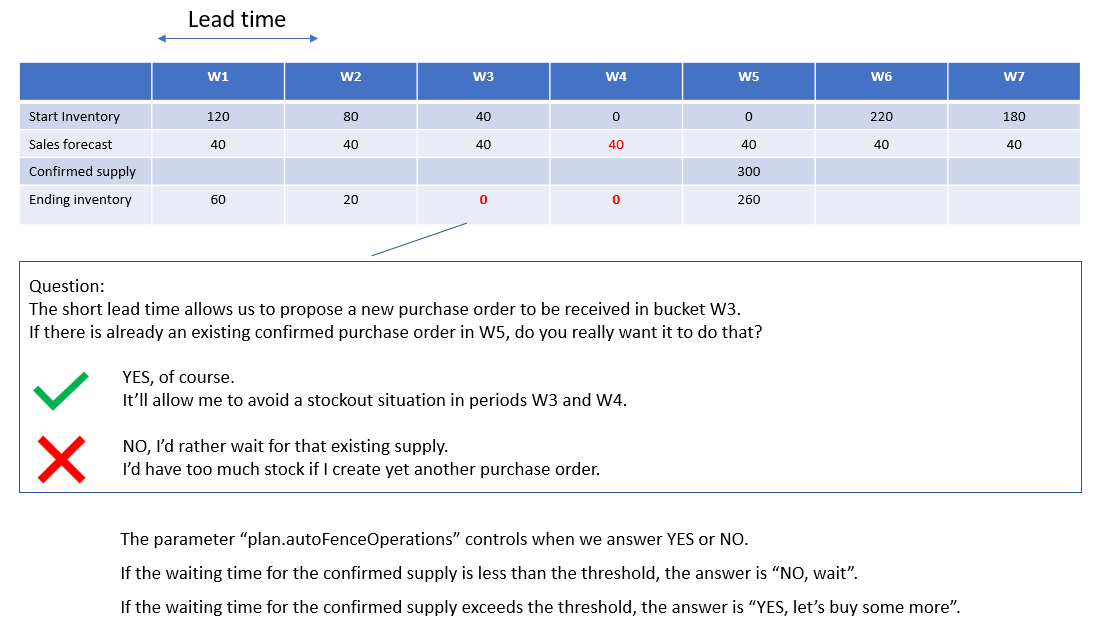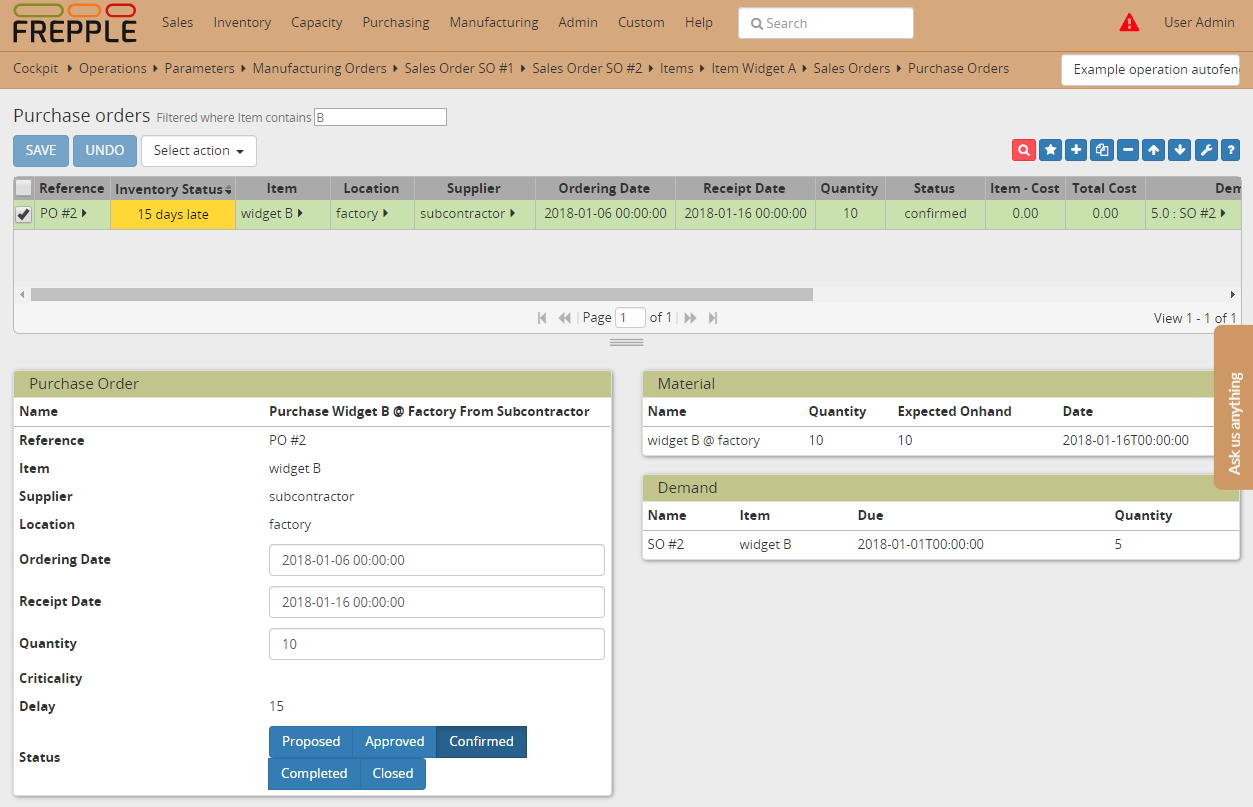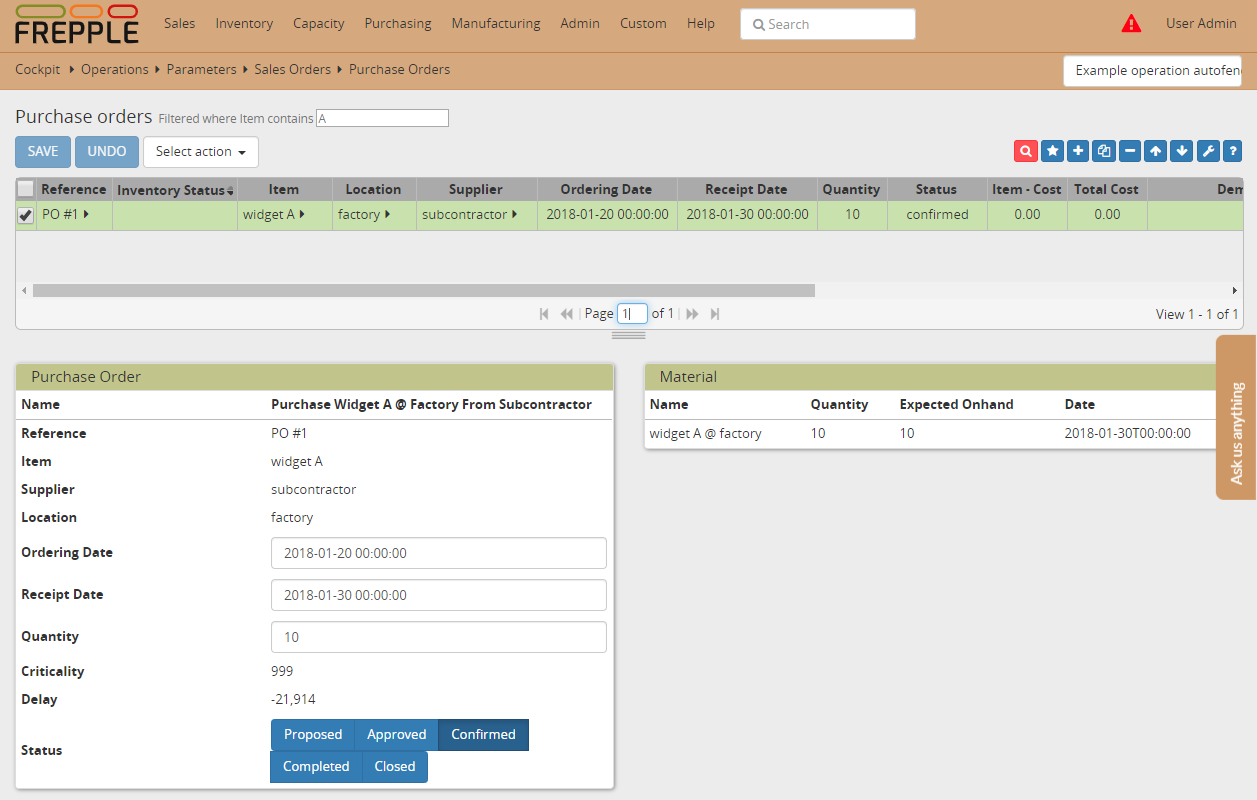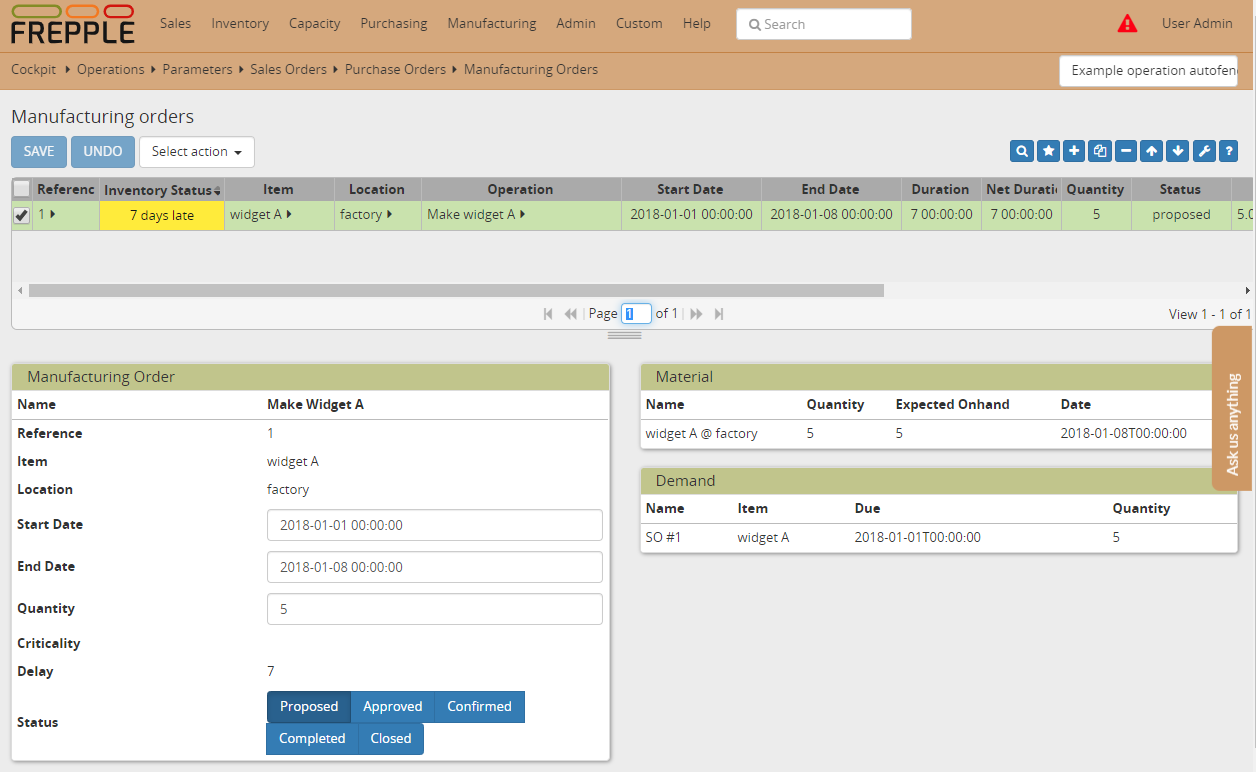Release fence and awaiting confirmed supply
A release fence can be set to specify a frozen zone in the planning horizon in which the planning algorithm cannot propose any new manufacturing orders, purchase order or distribution order. The fence represent a period during which the plan is already being executed and can no longer be changed.
Optionally, this concept is further extended with an automatically computed release fence that is based on confirmed supply.
Imagine a situation where the lead time is 7 days, and we have a confirmed purchase order coming in on day 10. Do you want that frePPLe can propose a new purchase order earlier than day 10? Probably not, and you’ll prefer to await the existing purchase order (eventually calling the supplier to expedite the delivery).
Imagine the same situation but the confirmed purchase order is coming in after 40 days. Do you want that frePPLe can propose a new purchase order earlier than day 40? Probably yes.
Check this feature on a live example
Download an Excel spreadsheet with the data for this example
Here is a step by step guide to explore the example:
- This example shows two items. Each of these items can be manufactured in house, or we can outsource the production to a subcontractor. The in house production is defined in the operation table. The outsourcing is defined in the item supplier table. As described in another example Alternate operations, the priority field controls selection between these alternates.Each item has a single sales order.We have confirmed purchases orders with the subcontractor going as far out as 30 days.
- The release fence can be set differently on each operation.

- With the parameter plan.autoFenceOperations you can control how long you are prepared to wait for existing/confirmed supply before proposing a new replenishment. The default value is 999 (days), which basically means that we use up all confirmed supply before proposing new supply.

This picture illustrates the concept of this parameter (note: the numbers in the picture don’t match the example model).

- For item “widget B”, frePPLe chooses to wait for the incoming shipment from our subcontractor. The difference between the requirement date of Jan 8th and the arrival of the supply on Jan 16th is within the allowed delay of 12 days.This delay creates extra lateness for our sales order.


- For the item “widget A” the supply arrives much later, and frePPLe proposes to launch a new in-house manufacturing order.The sales order is now delivered a bit earlier. However, the incoming purchase order of widget A is now unused (notice the empty “demand” column) and we create excess inventory.



